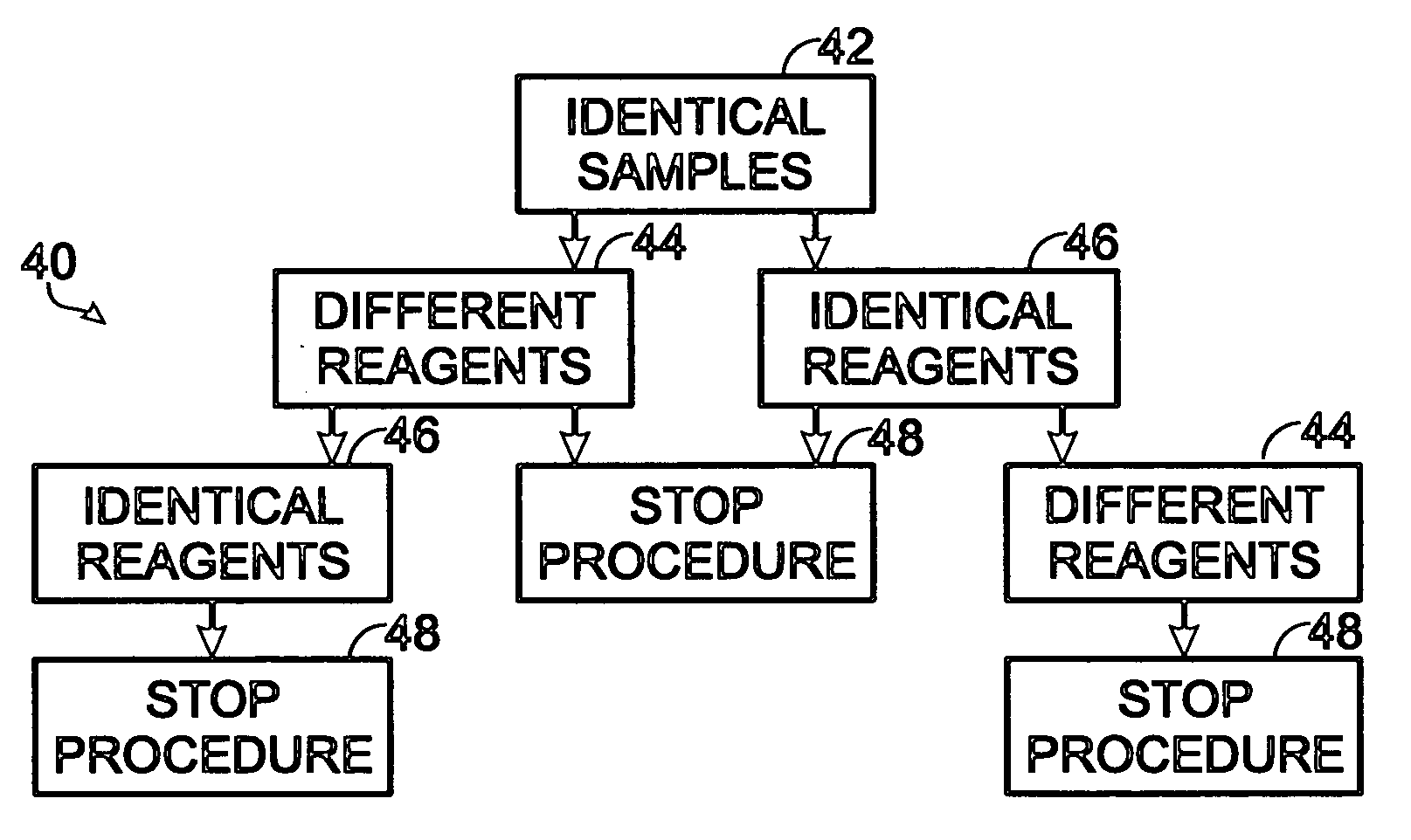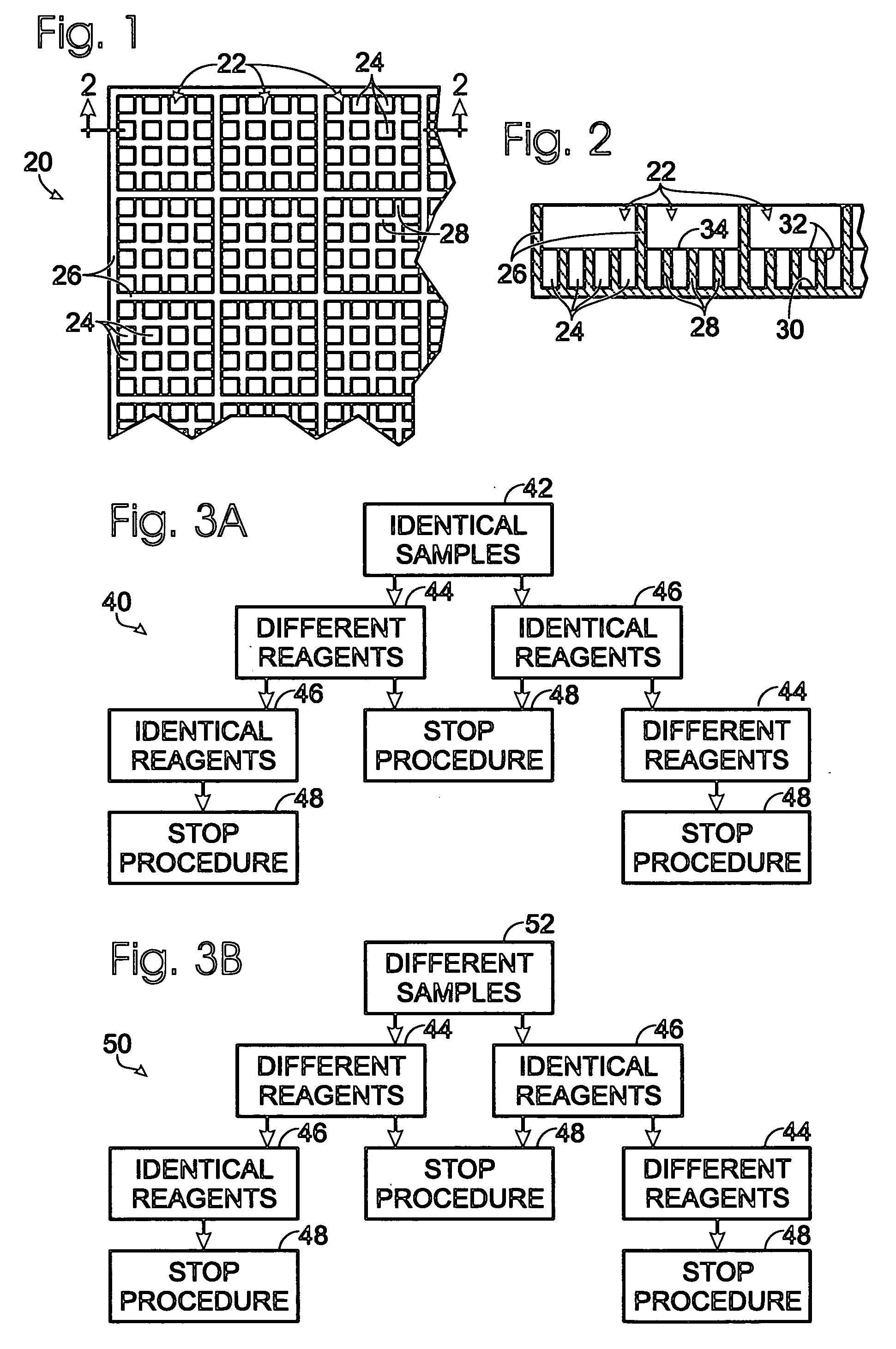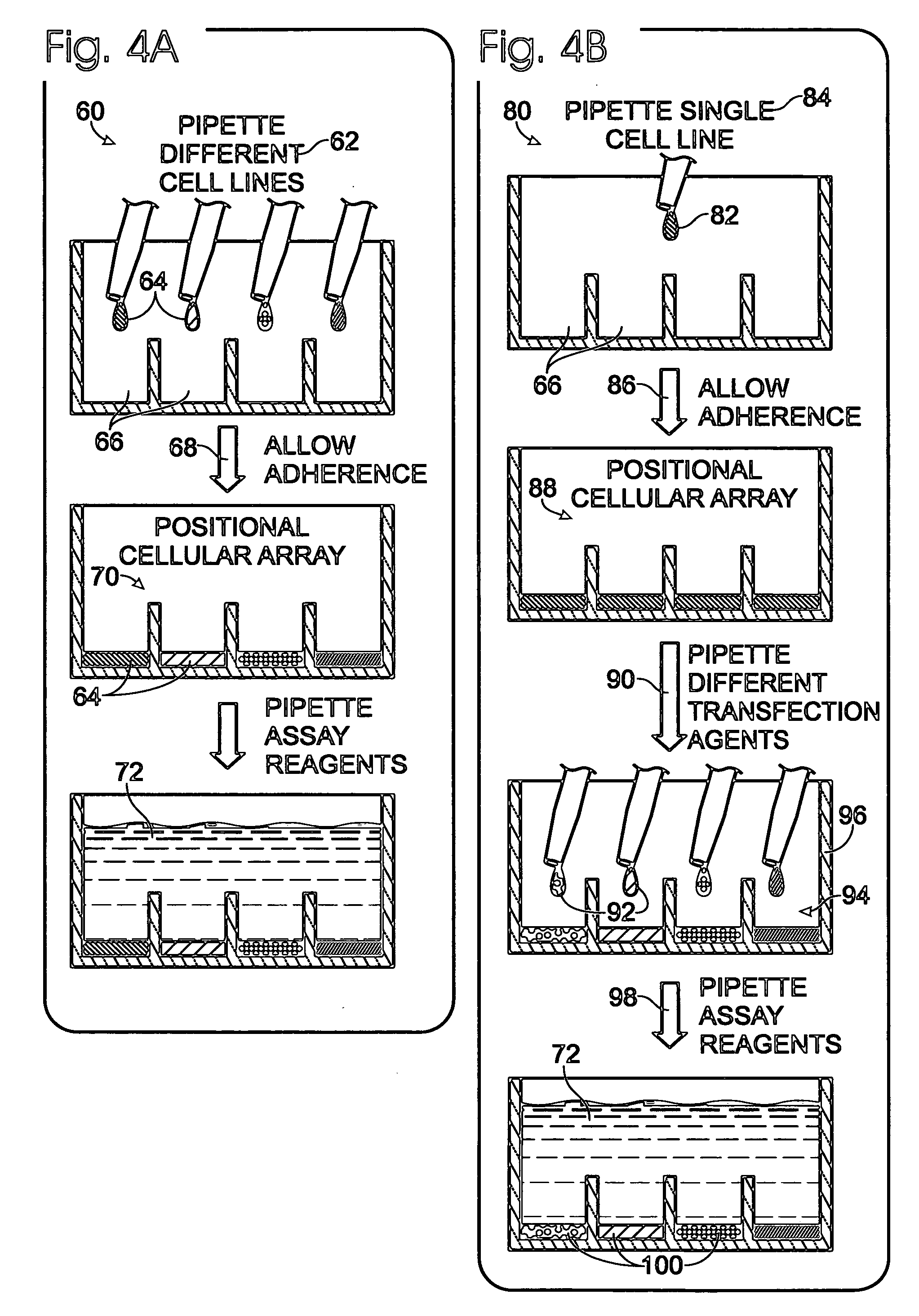Assay systems with adjustable fluid communication
a fluid communication and fluid communication technology, applied in the field of fluid communication assay systems with adjustable fluid communication, can solve the problems of difficult or impossible to guarantee the same testing conditions between different samples, and the inefficiency of dispensing reagents to standard microplates
- Summary
- Abstract
- Description
- Claims
- Application Information
AI Technical Summary
Problems solved by technology
Method used
Image
Examples
example 1
Microplates with Subdivided Wells
[0095] This example describes embodiments of microplates having integral sub-wells; see FIG. 6.
[0096]FIG. 6A shows microplate 130 having a frame 132 and a plurality of wells 134 disposed in the frame. Here, microplate 130 is configured to have 96-wells in eight rows of twelve columns. However, the size, shape, number, and disposition of wells 134 may be selected based on the application, as described above in Section I.
[0097]FIGS. 6B and 6C show magnified and sectional views, respectively, of one of wells 134 with sub-wells 136 visible. Here, each well 134 includes nine sub-wells that are frustoconical. However, sub-wells 136 may have any suitable size, shape, number, and disposition within each well, as described above in Section I. FIG. 6C shows sub-wells 136 formed as recesses 138 in the material of microplate 130. As shown, bottom portion 140 defined below each sub-well may be thinner than the average thickness of microplate 130 and / or thinner...
example 2
Conversion of a Standard Microplate
[0098] This example describes how a standard microplate may be converted into a microplate with subdivided wells. A standard microplate typically has wells with uniform depth, but may be converted into a superpositional array of wells and sub-wells, where the wells have different relative depths, in accordance with aspects of the present teachings.
[0099] Standard microplates may be configured as superpositional arrays of wells and sub-wells by reducing the height of one or more inner walls of the microplate. For example, an industry-standard 1536-well microplate may be converted into a superpositional array of 96 wells, each containing 16 sub-wells. To make such a conversion, various inner walls of the standard microplate may be machined to a lower height than the other walls, to create the desired superpositional array. More generally, any desired sub-well structure may be created by altering (e.g., lowering or raising) the height of some of the...
example 3
Microplates with a Hierarchy of Sub-wells
[0100] This example describes microplates with a hierarchy of sub-wells and methods of using these microplates for performing biological assays with cells; see FIGS. 7 and 8.
[0101]FIG. 7 shows an exemplary microplate with wells subdivided into a hierarchy of fluid compartments to provide three-levels of adjustable fluid communication. The microplate may be used, for example, to perform a plurality of different assays on a plurality of different cell types in each well. Furthermore, each well may be used to test the effect of a substance, such as a candidate modulator, on the different cells type in the different assays. Alternatively, the microplate may be used to contact sets or groups of different cell types within each well with the same reagent. For example, each group of different cell types may be placed in fluid communication with a fluid containing a transfection material, so that each of the cell types is exposed to, and transfecte...
PUM
 Login to View More
Login to View More Abstract
Description
Claims
Application Information
 Login to View More
Login to View More - R&D
- Intellectual Property
- Life Sciences
- Materials
- Tech Scout
- Unparalleled Data Quality
- Higher Quality Content
- 60% Fewer Hallucinations
Browse by: Latest US Patents, China's latest patents, Technical Efficacy Thesaurus, Application Domain, Technology Topic, Popular Technical Reports.
© 2025 PatSnap. All rights reserved.Legal|Privacy policy|Modern Slavery Act Transparency Statement|Sitemap|About US| Contact US: help@patsnap.com



